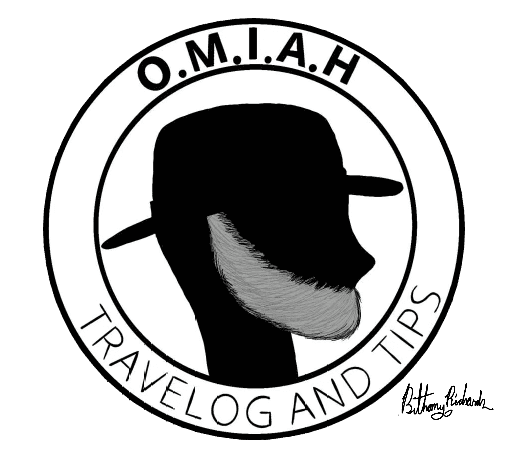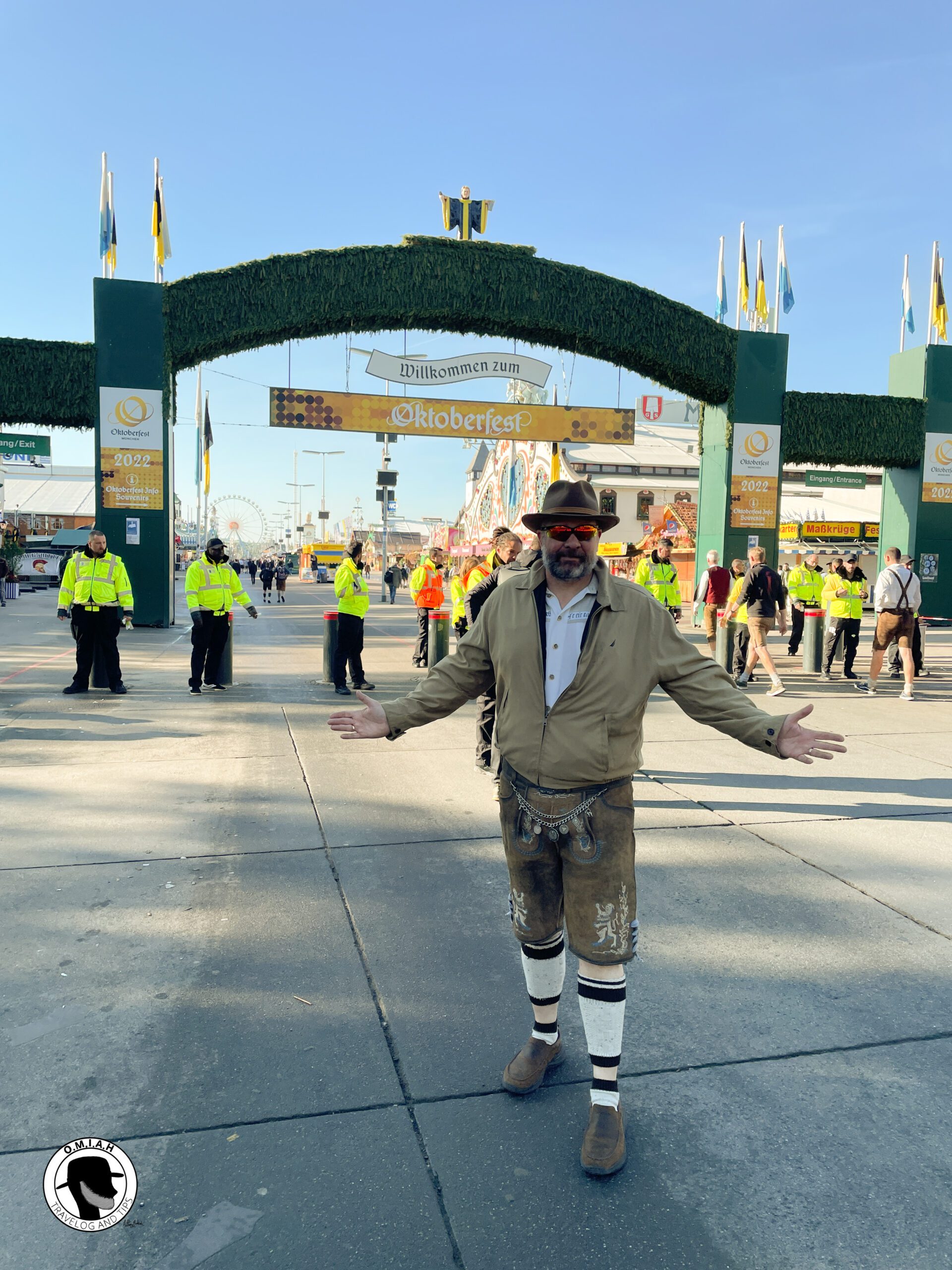My Oktoberfest itinerary is to offer ideas for you to enhance your Oktoberfest planning for an extended stay that will allow you to see more of Germany.
I crafted this Oktoberfest itinerary last year to take a buddy of mine on a bucket list trip to the Oktoberfest. You can obviously play with the dates to align with events you want to experience at the Oktoberfest, such as the opening day Trachten Parade and ceremonies.
For those who don’t know, “Trachten” is the traditional attire including the Dirndl and Lederhosen.
If you want some more detail on these cities, please read the blogs I posted previously on these cities. Links are provided after each section.
We bypassed the allure of driving on the Autobahn and selected the German rail pass, allowing travel on 5 days during a 30-day period.
Disclaimer: This blog is intended to entertain and inform. I will mention several restaurants and hotels that were leveraged for this trip. The opinions presented herein are my own.
Landing in Frankfurt
Frankfurt has a busy but easy to navigate airport and is the primary gateway to Germany. The airport train station is in Terminal 1. The local and S-Bahn trains going into Frankfurt can be accessed directly in the Terminal 1 Building. For the Long distance and inter-city trains, you will need to go across the street. Follow the signs for the Fernbahnhof.
Oktoberfest Itinerary: One Day in Cologne
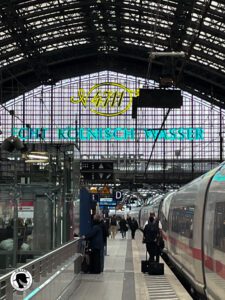
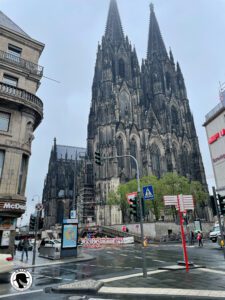
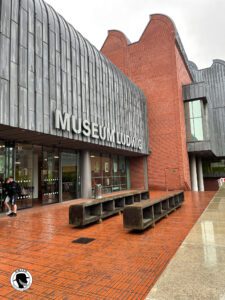
The first day in Europe can be a challenge for people as they adjust to the time zone difference, Our Oktoberfest itinerary began with a one day stop in Cologne. The train ride from Frankfurt Airport to Cologne Hauptbahnhof was just a little over an hour.
Cologne is a great metropolitan city with a lot to experience. But taking the first day of the trip to adjust to the time shift, Cologne provides a great cultural experience in its city center. So, there is a lot to see without having to trapse all over the place.
Where to stay
–We stayed at the Hilton Cologne. The hotel is conveniently located around the block from the Hauptbahnhof and the cathedral square. The hotel is a nice facility. It had a solid offering in the gym of weights and aerobic equipment. There is an onsite restaurant and bar. Room was clean and comfortable.
There is a lot to see with a mile radius from the hotel. You can see quite a bit while taking a leisurely stroll. Key points of interest include:
Cologne Cathedral.
The cathedral’s foundation stone was set in 1248. The construction of this gothic masterpiece lasted 632 years. It is the 3rd tallest church in the world. The architecture of this Cathedral is truly breathtaking. It is free to enter, but of course, accept donations for its upkeep.
Museum Ludwig
Entrance fee is 11 Euro for adults. The museum’s houses the largest collection of Picassos in Europe, and its collection includes Dali, Warhol and Roy Liechtenstein paintings.
Alter Markt
In the Alter Markt, you can find the Gross St. Martin Church, as well as a wide pedestrian zone lined with restaurants, bars, and tourist attractions.
Just taking a stroll.
Walking along the river front is a great option to get the blood moving after a long time sitting on a flight and train ride. There are plenty of restaurants and cafes to stop at as well to watch the ferries and barges move up and down the Rhine.
Food
While there is a wide array of restaurants in the city, I do recommend Früh am Dom. Besides being conveniently located to the Cathedral square, the food is excellent German comfort food and local cuisine. Früh is also a brewer of Kölsch, the regional style of beer, that I probably spent too much time on in my blog on Cologne.
The link to my blog on Cologne is below:
An Afternoon in Cologne Germany – O.M.I.A.H. Travelog and Tips (omiah-travelogandtips.com)
Oktoberfest itinerary – 3 days in Berlin
The train ride from Cologne to Berlin takes 4 hours. I highly recommend making a reservation on the Deutsche Bahn website. It cost about 11 Euro for the entire ride to Berlin. Well worth the incremental cost to secure a seat. Otherwise, you risk having to move seats several times during the trip or spending it in the dining car if you are lucky enough to find a seat there.
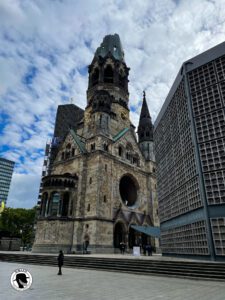
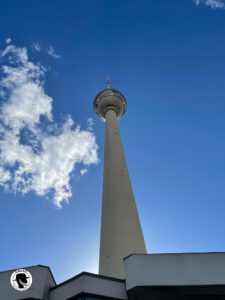
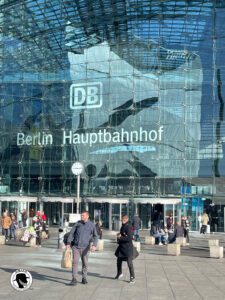
Where to stay in Berlin
In Berlin we stayed at the Hilton Berlin on Mohrenstrasse. It’s a bit of a trek to get there from the Hauptbahnhof, or an easy Uber/taxi ride if you want to spend the cash. While not a direct train to the Hauptbahnhof, there is an S-Bahn station at its front door and is a great location for branching out into the city. The hotel is located right across from the Deutscher Dom at the Gendarmenmarkt. This was a nice facility with a decent gym, conference center and on-site restaurant and bar. The room was very clean and comfortable.
Berlin Day 1 –
Gendarmenmarkt
The Gendarmenmarkt is a square in the center of Berlin. It’s name was derived from the “Gens d’armes” regiment. The stables of the regiment were demolished by Friedrich the 2nd. Today, the large public square is bookended by the Deutscher (German) Dom on one end, and the Französicher (French) Dom on the other, with the Konzerthaus in the middle.
Reichstag
Seat of German Government, public can go up in the dome rotunda that offers a great view of the city, as well as a look into the main hall of the Reichstag.
Brandenburg Gate
Gate built between 1788 and 1791 on the order of King Frederick William II of Prussia. The gate marks the beginning go the road from Berlin to Brandenburg. Brandenburg was the capital of the Margraviate of Brandenburg at the time.
Memorial to the murdered Jews of Europe
The memorial was inaugurated on May 10, 2005. The memorial took 10 months to construct at a cost of 25 million Euros. The attached building of information contains the name of ~3 million Jews killed during the holocaust.
Führer’s bunker
The cite of the bunker is located at Hannah-Arendt Strasse and Gertrud-Kolmar Strasse. There is a marker identifying the entrance to the bunker where Hitler took his life.
Berlin Day 2
Museum Island
Museum complex built on an island in the river Spree. Prussian kings ordered the construction of the complex. The construction lasted from 1830 – 1930. In the year 1999, the United Nations listed Berlin’s Museum Island among the UNESCO World Heritage sites. Now, we only visited the Pergamon and Neues Museum, however the full complex consists of the following:
Altes Museum
Built in 1830
Neues Museum
Finished in 1859. Also known as the Egyptian Museum of Berlin. Key artifact is the bust of Nefertiti.
Altes National Galerie
Finished in 1876 and houses an art gallery featuring 19th century collection.
Bode Museum
(Dedicated to Patrick Swayze’s character in Point Break…just kidding). Opened in 1904, this museum houses a collection of Byzantine art.
Pergamon Museum
Constructed in 1939. The museum houses many reconstructed buildings. Two notable items of the collection in this museum are the Pergamon Alter, for which the museum is named, and the Ishtar Altar. And no, the Ishtar altar is where you worship the movie of the same name (The movie was awful).
Humboldt Forum
Located in the Berlin palace it opened in 2020 and houses the Ethnological Museum of Berlin and the Museum of Asian Art
Berlin Cathedral
Evangelical Cathedral located on the Lustgarten on Museum Island. Since its establishment, the cathedral has been a house of worship for Catholic, Lutheran, Reformed religions. Today it is a United church. The cathedral was originally consecrated in the year 1454 as a Roman Catholic church, “St. Erasmus Chapel”. The Cathedral also serves as a dynastic tomb, holding the royal tomb of the Hohenzollern dynasty.
Alexander Platz
Located in the Mitte section of Berlin. This immense square was named for Alexandar the Great. King Wilhem Fredrick III named it to commemorate the Tsar’s visit to the city. When separated, this was the gem of the DDR to display this modern sophistication. Point of interest
TV Tower
368-meter-tall TV tower with restaurant and viewing platform at the 208-meter level. On a clear day you can see 26 miles away. Ironically it was built to show the technological sophistication of the east, where religion was tamped down. When the sun hit the windows, the reflection formed a cross.
Urania World Clock
16-ton clock built in 1969 where the time of 148 major cities can be determined.
Berlin Day 3
Potsdamer Platz
This square has had its ebbs and flows over the decades. The square was pretty much destroyed during WWII, but saw a rebound during the cold war. This recovery was interrupted by the 1961 uprising in East Germany, which resulted in the wall being built. This effectively split the square in half and created a no-man’s land between the walls, separating east and west Berlin. After the wall fell, a significant re-building effort took place. Companies such as Daimler-Benz, Sony and ABB Group invested billions of dollars to reconstruct the square.
Spy Museum
Opened in 2015, this attraction exhibits depicting the stories and tactics of espionage.
Checkpoint Charlie
This is a rather touristy spot, but is emblematic of the cold war, as this was crossing between the east and west. Checkpoint Charlie has been a Berlin landmark used in many movies set in the cold war era.
Topography of Terror
A permanent exhibition built on the location of the main offices of Gestapo, SS and Reich Security Main Office.
The Berlin Wall
Wall remnants exist along the Potsdamer Platz as well as brick inlays in the street to show the wall’s location.
Kufürstendamm
Aside from being a shopper’s mecca, the Ku-Damm is the site of the Kaiser Wilhelm Memorial church. Allied bombings destroyed the church in 1943. The burned-out spire is all that remains of the original church. It stands today next to the church built on the site and consecrated in 1961.
Berlin Zoo
Opened in 1844, it covers 35 hectares (86.5 acres) and is located in the Tiergarten section of Berlin. It’s home for about 1,380 different species and over 20,000 animals.
For more detail on what to do in Berlin, check out my full blog on the city of Berlin.
Oktoberfest Itinerary – 2 Days in Nuremburg
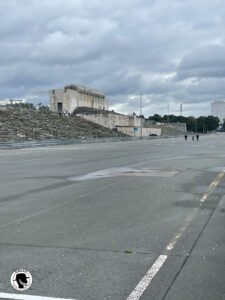
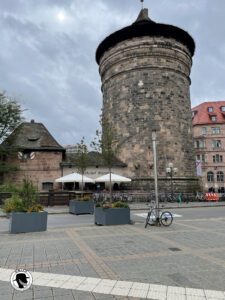
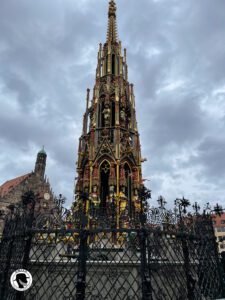
Similar to the trip to Berlin, the train ride to Nuremburg takes about 4 hours.
Where to stay
There are plenty of hotels near the Nuremburg Hauptbahnhof, but we stayed at the NH Collection Nuremberg City. It is a nice hotel just a couple of blocks from the train station and the Konigstor gate into the walled Altstadt.
Nuremburg Day 1
Arrive in town. Check into the hotel, then head out to see the cites marking the city’s Nazi era history.
Nazi rally grounds
Location of 6 massive Nazi party rallies between 1933 and 1938. The Zeppelin Field still stands as a memorial, though the city uses the area for part of their Grand Prix track.
Documentation Center
6 Euro Admission fee. Museum dedicated to Nazi propaganda and atrocities. There is a focus of the activities that particularly occurred in Nuremberg. When we went in 2022, the Documentation Center was under renovation and a temporary exhibit was in place.
Day 2 –
Old town.
The city center is set behind its medieval wall.
Nuremberg castle
7 Euro Admission fee. This is truly the castle on the hill. The initial structure in this complex was built in the late 13th century. Served as an Imperial Castle of the Holy Roman Empire. The castle was heavily damaged during WWII, and significant portions of the castle had to be rebuilt after the war.
Dürer House
6 Euro admission fee. House of Albrecht Dürer, who many consider to be one of Germany’s greatest artists. Dürer worked in multiple media, including metal etchings, wood carvings and on canvas.
Craftsman Courtyard
Located after you pass through the Frauen Tor which is right across from the train station. This former defensive courtyard is now home to a small complex of shops. You can actually see craftsmen doing work, i.e. metalsmiths, bakers, doll makers, etc.
Art bunker
9.50 Euro. Tours the underground tunnel where the nazis and citizens of Nuremburg hid art and other treasures to protect them from damage during WWII bombings.
Schöner Brunnen (beautiful fountain)
19-meter high, 14th century fountain and considered one of Nuremburg’s landmarks located near the town hall on the “historical mile”.
If you want to learn more about the city, please visit my page on Nuremburg
Oktoberfest itinerary – 4 Days in Munich
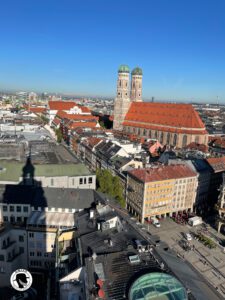
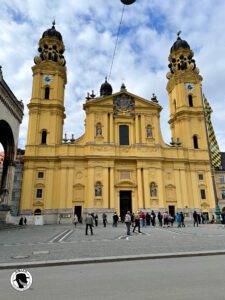
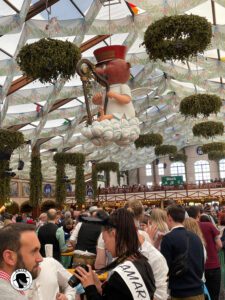
I’m going to list this section of the suggested Oktoberfest itinerary a bit differently as the primary purpose of an Oktoberfest itinerary is to make sure you attend that small beer themed soiree held on the Theresienwiese. Instead of listing the day-to-day recommendation of what we did, I’m just going to present options for filling free time. I do suggest breaking away from the Oktoberfest to see the beautiful city of Munich.
Where to Stay
Munich has a great selection of hotels ranging from 1 – 5 stars. The price for all of them will be at a premium during the Oktoberfest. If you are willing to be further away from the Theresienwiese, you can definitely get more hotel room for your money.
I stayed at the Hilton Munich City that is located in the Haidhausen district, near the Ost-Bahnhof. The hotel has direct access to the S-Bahn station. The direct access made it very easy to go into the city center. There are a number of S-Bahn lines that come through every few minutes to take to the city center.
Museums
Deutsches Museum
Formally named as the “Deutsches Museum von Meisterwerken der Wissenschaften und Technik”, translated as the German Museum of Masterpieces of Science and Technology. Founded in 1903, the Deutsches Museum houses exhibits founded in technology and engineering.
Pinakothek Complex
Established in the year 1836. The Pinakotek complex consists of three galleries housing art from particular periods. The entrance fees are 8 – 10 Euro depending on the museum:
Alte Pinakothek
Museum features artists from the 14th – 18th century
Neues Pinakothek
This museum houses Nineteenth Century Artists
Pinakothek der Moderne
This museum features a collection of Modern Art
Churches
Frauenkirche
Also called the Münchner Dom, or Munich Cathedral. The Frauenkirche was consecrated in 1494. Its dual Onion dome towers is the symbol of the city of Munich. The towers top out at 109 Meters. The importance of the church as a symbol of Munich resulted in the city passing an ordinance that no building in the town center can exceed 99 Meters. Thereby assuring that the Frauenkirche will be the tallest building in the Altstadt.
St, Kajatan
This church is also called the Theatiner Kirche. This Catholic church built between 1663 and 1690. The St Kajetan’s exterior is done in the high Italian baroque style with a rococo façade.
Asam Kirche
This beautiful church is officially named St. Johann Nepomuk. The church is located in the Altstadt and was built in 1746. The church is more colloquially named after the Asam brothers who built the church.
St. Peter
Also called Alte Peter, this church is in the center of the Altstadt next to the Viktualen Markt. Monks lived on this site in the eighth century, prior to the establishment of the city. The first church set on this site was established in 1368. Today, the church is a key structure in the Altstadt skyline. The 306-step climb to the viewing platform provides a lovely view of Munich and the Alps.
POI (Points of Interest, not the fish dish)
Viktualienmarkt
Farmers market held daily since 1807. The Viktualienmarkt beer garden operator rotates the beer served between the 5 Bavarian brewers on a daily basis.
Nymphenberg palace
Baroque palace of the Wittelsbach family constructed between 1164 and 1675. It’s a nice palace, just a bit out of the way.
Beer gardens
There are many beer gardens throughout Munich. My favorite gardens in the city center are the Chinesicher Turm in the Englisher Garten, the Augustiner Garten on Arnulfstrasse at the Viktualienmarkt
Englischer Garten
The largest city center park in Europe. Attractions include the aforementioned beer garden, surfing at the river Inn sluice, plenty of trails, Japanese Tea house, Monopteros (Greek style temple on a hill) and on warm sunny days the park is full of sunbathers…clothed and nude.
For more detail, please check out my blog on the city of Munich.
The task of getting back to the Munich Airport is a breeze. Of course, you can take a taxi or uber. But there is an inexpensive express bus route that leaves frequently from the Hauptbahnhof, and the S1 and S8 trains are the rail alternatives.
If you want ideas for day trips out of Munich there are great options such as Salzburg Austria (which you can go to with the German Rail Pass), Garmisch-Partenkirchen (Zugspitze), Neu Schwanstein, Dachau, the Wies Kirche and Oberammergau.
I hope this proposed Oktoberfest itinerary gives you some ideas to supplement your trip to Munich with some great places to visit and make the most of your trip to Germany.
Until next time!
Travel well. Pursue experiences!
O.M.I.A.H.
